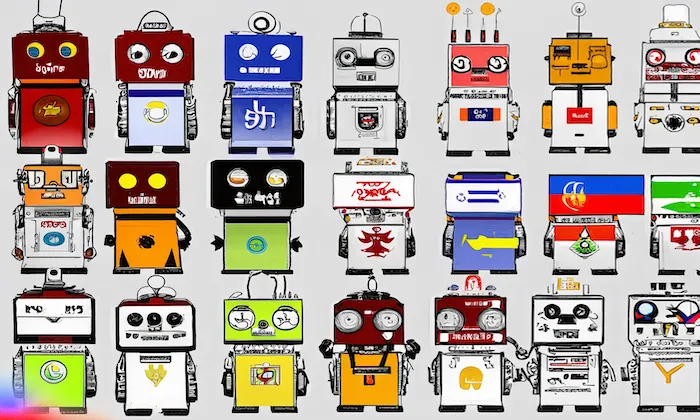Can I fine-tune a pre-trained TTS model with a voice cloning dataset?
TTS
Custom Voice
Voice Cloning
Fine-tuning a pre-trained Text-to-Speech (TTS) model using a voice cloning dataset is not only feasible but can significantly enhance the model’s ability to generate more personalized and realistic speech outputs. This process leverages existing models trained on large datasets and adapts them with specific voice data to achieve unique vocal characteristics. Let's delve into how this works and why it's beneficial.
The Process of Fine-Tuning TTS Models
Fine-tuning involves taking a pre-trained model and further training it on a smaller, specialized dataset. In TTS, this means using a voice cloning dataset with recordings from a specific speaker or group. The aim is to adapt the model to replicate the distinct nuances, tone, and emotional expressions of the target voices.
Key Steps in Fine-Tuning TTS Models
- Data Preparation: Collect a high-quality voice cloning dataset, ideally including both scripted and unscripted recordings. This variety captures a range of speech patterns and emotional tones, vital for expressive synthesis.
- Model Selection: Choose an appropriate pre-trained TTS model like Tacotron, WaveNet, or FastSpeech. These models are widely used and suitable for various voice synthesis tasks.
- Adjusting Hyperparameters: Modify hyperparameters such as learning rates and batch sizes to optimize performance during the fine-tuning phase.
- Training: Start the training process, allowing the model to adapt its weights based on the new dataset. The duration varies based on dataset size and computational resources.
- Evaluation and Iteration: Evaluate the model to ensure it meets quality standards, using both automated metrics and subjective listening tests to assess naturalness and accuracy.
Why Fine-Tune with a Voice Cloning Dataset?
Fine-tuning is particularly valuable for several reasons:
- Personalization: As consumers seek tailored experiences, fine-tuning allows TTS systems to sound more like specific individuals, enhancing user engagement.
- Improved Naturalness: Pre-trained models might miss specific inflections or emotional cues present in the target dataset. Fine-tuning addresses these gaps, resulting in more natural-sounding speech.
- Diverse Applications: From virtual assistants to gaming characters, having a model that can authentically represent a voice improves user experience across various applications.
Critical Considerations for Effective Fine-Tuning
While fine-tuning can yield impressive results, it's essential to consider:
- Dataset Quality: The effectiveness of fine-tuning relies heavily on the quality and diversity of the voice cloning dataset. FutureBeeAI provides studio-grade, diverse, and ethically sourced voice data that supports accurate and expressive model adaptation.
- Overfitting Risks: There's a risk of overfitting if the dataset is too small, which can make the model overly specialized and less effective for general tasks.
- Resource Requirements: Fine-tuning is resource-intensive, requiring significant computational power and time. Balancing these resources against the benefits is crucial.
Avoiding Common Pitfalls in TTS Model Fine-Tuning
To ensure successful fine-tuning, it's important to avoid common missteps:
- Neglecting Data Diversity: Focusing only on one type of speech, like scripted dialogues, can limit the model's ability to generalize. Including diverse emotional tones, accents, and contexts enriches the dataset.
- Insufficient Evaluation: Sole reliance on automated metrics may overlook nuanced deficiencies. Human evaluations provide a more comprehensive assessment.
- Ignoring Ethical Implications: Ensure all permissions and ethical considerations are in place when using voice cloning data, especially in sensitive applications.
Real-World Use Cases and Benefits
Fine-tuning has shown tangible benefits across various industries. For instance, in gaming, character voices can be made more engaging and realistic. In virtual assistants, personalized voices can improve user interaction and satisfaction. Similarly, accessibility tools benefit from voice adaptation, enhancing communication for individuals with speech impairments.
Conclusion
Fine-tuning a pre-trained TTS model with a voice cloning dataset is a powerful approach to creating personalized, expressive, and realistic speech outputs. By carefully curating high-quality datasets and being mindful of potential pitfalls, teams can leverage this technique to enhance user experiences across diverse applications. At FutureBeeAI, we understand the importance of quality data in this process, and our capabilities in sourcing and providing high-grade voice datasets can be instrumental in your fine-tuning projects.
For projects requiring specialized voice datasets, FutureBeeAI's expertise in data collection and annotation can provide the foundational elements needed for successful TTS model fine-tuning.
Smart FAQs
Q. Can any pre-trained TTS model be fine-tuned with voice cloning data?
A. Most pre-trained TTS models can be fine-tuned, but it's essential to select a model compatible with the voice cloning dataset and intended use case. Ensure the model architecture can accommodate the nuances of the target voice.
Q. What types of voice cloning datasets are most effective for fine-tuning?
A. Datasets that include a variety of speech styles, emotional tones, and accents tend to be most effective. A mix of scripted and conversational speech can provide a more comprehensive training ground for the model.
What Else Do People Ask?
Related AI Articles
Browse Matching Datasets
Acquiring high-quality AI datasets has never been easier!!!
Get in touch with our AI data expert now!








